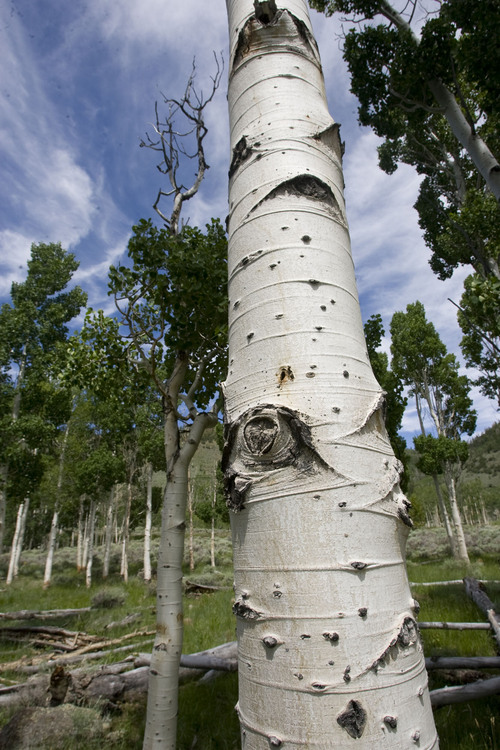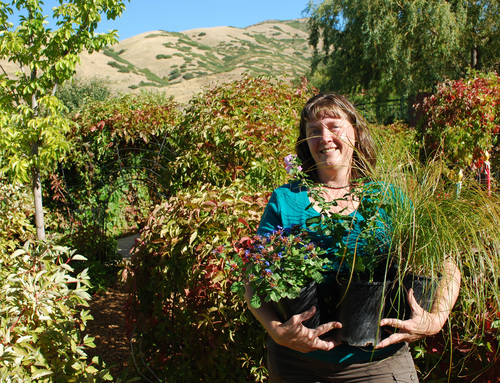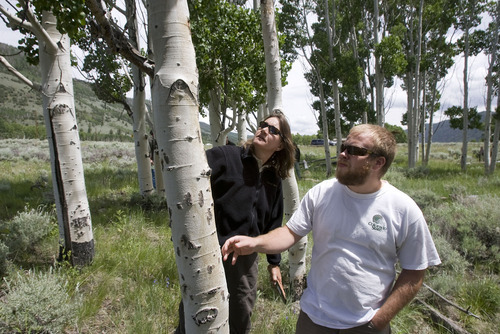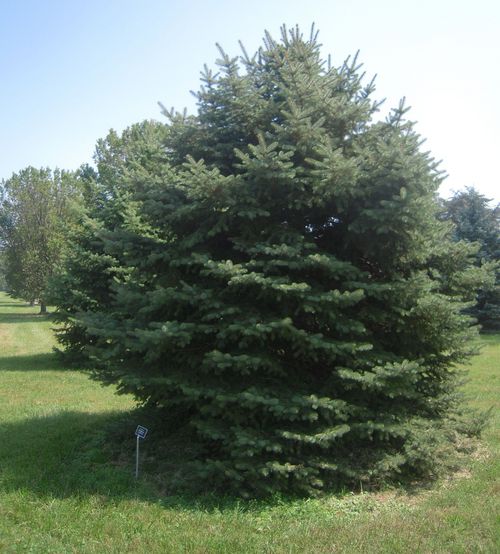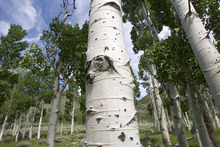This is an archived article that was published on sltrib.com in 2014, and information in the article may be outdated. It is provided only for personal research purposes and may not be reprinted.
If the decision were up to Marita Tewes-Tyrolt, Utah's new state tree would not be the quaking aspen.
Tewes-Tyrolt, horticulture director at Red Butte Garden and Arboretum, said she has nothing against the quaking aspen, a native Utah tree, but prefers the white fir.
"I just think it appears to me to be a more proud tree," she said.
But aspen it is, as of Tuesday.
That's when SB41 takes effect, capping the efforts of some fourth-graders from Monroe Elementary who turned to their local lawmaker, state Senate Majority Leader Ralph Okerlund, for help in getting legislation passed.
They lobbied to switch the official symbol from the Colorado blue spruce — Utah's state tree since 1933 — because of its state namesake.
Jason Curry, spokesman for the Utah Division of Forestry, Fire and State Lands, is happy with the decision. He said no tree captures the essence of Utah better than the aspen.
"As communities," Curry said, "we are tightknit and we have a good heritage here that kind of parallels the way the aspen tree and the aspen organism is made up."
For him, one of the most striking parallels is the tree's deep root system. Quaking aspen are a clonal species, which means they share roots and new shoots spring from old growth. Curry sees similarities in Utah's communities and historical foundations.
The largest conglomerate of quaking aspens is near Fish Lake in Utah. The growth in that location, known as Pando, is more than 80,000 years old and is the world's largest known living organism, sprawling across 106 acres with trees all arising from the same roots.
Curry worries, though, about the future of aspens. The organism faces "troubling" threats and declining populations, he said.
Aspen needs space to grow and is often out-competed by regional conifers, Curry said.
To address that, he said forest managers need to carefully control forest fires to the advantage of the quaking aspens.
Blazes burn down some of the older conifers and enable more aspens to grow in their place.
But animals — moose, elk, deer and cows — are feeding off of the new shoots and preventing new growth that experts believe is needed to keep the Pando from dying of old age.
Curry, who has worked with the Division of Forestry for seven years, said the organization never discussed any other options for the new state tree. He said the mosaic pattern on the quaking aspen is "iconic," especially in the fall.
"One good thing about it is it doesn't contain the name of another state," he joked. "I think it's fitting."
Tewes-Tyrolt, a gardening expert with Red Butte for nearly 20 years, said the quaking aspen name was chosen because of the way the leaves are shaped. When the wind blows, the leaves make a quaking sound.
The aspen, according to Tewes-Tyrolt, also needs a cool and wet atmosphere to flourish. She does not recommend planting the tree anywhere in the Salt Lake Valley because of the hot summer climate.
The quaking aspen is purportedly found in all of Utah's counties. It makes up an estimated 10 percent of forested areas in Utah, Curry said, whereas the blue spruce accounts for just 1 percent.
Still, Tewes-Tyrolt has her reservations. While she sees the aspen as beautiful, she hopes choosing such a widely known tree to represent the state will encourage Utahns to learn more about other native plants in the state — like the mountain mahogany (there are three species) or the white fir.
"Not to say anything against the aspen at all because it is one of Utah's great trees," she said. "But there are many other great trees."



